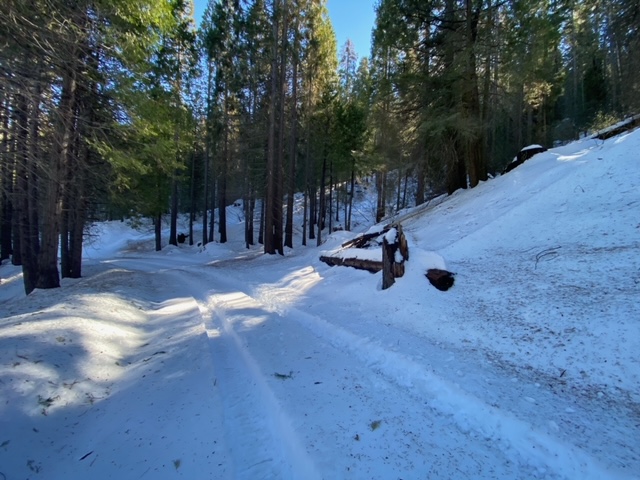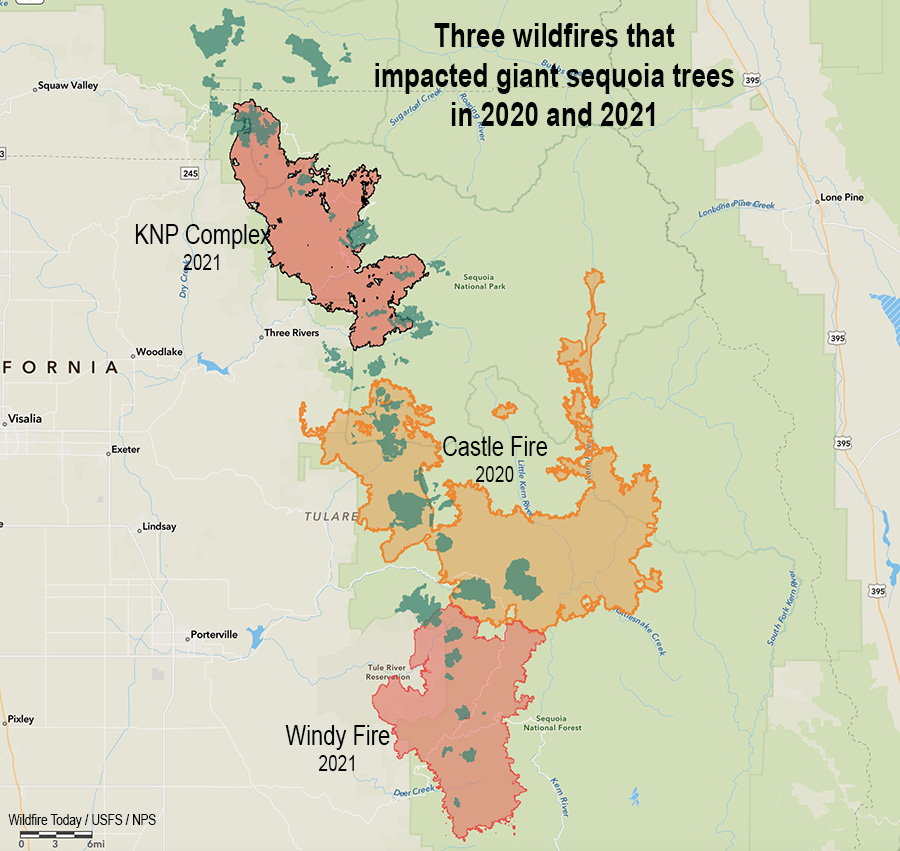
The Bureau of Land Management plans to burn up to 1,000 piles of downed hazard trees, branches, and understory brush at Case Mountain Extensive Recreation Management Area (ERMA) southeast of Three Rivers in Tulare County, California. Pile burn operations will start as early as Monday, January 10, and continue periodically until Spring, depending on weather, air quality conditions, onsite observations, and resource availability. Smoke may be visible in Three Rivers.
The ERMA contains the only giant sequoia groves managed by the BLM. They are on Case Mountain approximately 7 miles southeast of the town of Three Rivers, California. The complex is comprised of six distinct sequoia grove units, which total about 444 acres.
The prescribed fire is part of a multi-year fuels reduction effort in the groves. The objective is to strategically thin trees; remove ladder fuels which can feed flames to the treetops; and remove needles, branches, and brush on the forest floor. The prescribed fire will enhance protection of the wildland-urban interface for the town of Three Rivers, improve landscape health, and remove hazardous fuels near giant sequoia trees. Burning will take place only when weather and fuel moisture allow safe and successful operations.
The project is funded by a CAL FIRE grant and is a joint effort of the BLM, CAL FIRE, Tulare County Resource Conservation District, tribes, private landowners, and technical experts. It is closely coordinated with the San Joaquin Valley Air Pollution Control District.
The Case Mountain Forest Health Project is associated with California Climate Investments, a statewide program that puts billions of cap-and-trade dollars to work reducing greenhouse gas emissions, strengthening the economy, and improving public health and the environment – particularly in disadvantaged communities.
Protecting these iconic trees
In 2020, 10 to 14 percent of all giant sequoias across the tree’s natural range in the Sierra Nevada that were at least four feet diameter were killed in the Castle Fire when a substantial proportion of all sequoia groves touched by the fire burned with unprecedented severity.

In 2021 two additional large fires destroyed more of these iconic beasts of trees — the KNP Complex just north of the Castle Fire, and the Windy Fire which spread into the south side of the Castle Fire. These three fires were primarily in the Sequoia and Kings Canyon National Parks and the Sequoia National Forest.
More information about these trees that if protected can live for 3,000 years: Do we need a new paradigm for protecting iconic groves of remaining giant sequoias?

Another idea of California to speed up the destruction of something old and worth seeing, why can t the politicians get off the meth and relax, they already have the job just quit trying to earn it daily. That meth got the German Army a big defeat, hummus wonder why people are leaving that state, fun!
So ash from wood is a vital part of a mulch. It’s a natural source of potassium (or potash) and is also a primary component (of the three primary nutrients required by plants). It is vital in reducing soil acidity as well. It also contains vital nutrients for early plant growth (a major factor in success rates of seedlings). The best plant “foods” that are purchased have a degree of ash in them as well.
Ash also consists of phosphate, trace amounts of boron, copper, iron, manganese and zinc. However ash does NOT contain nitrogen, which is critical for new plant health and emergent growth. So when it rains and snows, the ash will mix with the soil to make a better-than-man-made mulch.
But this is just Silviculture, Ecology and especially Fire Ecology 101, most you are probably well aware of all this.
Maybe if they shape a grid in the forest or maintenance lines with regard to the normal wind direction that spreads the fires their efforts could be most effective. In other words bands with a width of several hundred feet or so could section off areas so that if a fire starts in one it still won’t make it to another.
To Ken, above,
Redwoods do not grow in the Sierras. Ever.
Why always destroy
Start a mulch program
This is a valuable resource
Dirt does not just happen
Burning is a terrible idea
Let’s create something positive
Not continue to destroy a valuable resource
Trees are life
No, they are so tiny that they have to land in a suitable spot, or they die quickly. The mechanism with regard to heat is that heat opens the cones, and the seeds fall out, landing on the ash seedbed beneath the tree.
Thank you for the clairification
Isn’t the heat needed for seed scarification?
No, they are so tiny that they have to land in a suitable spot, or they die quickly. The mechanism with regard to heat is that heat opens the cones, and the seeds fall out, landing on the ash seedbed beneath the tree.
Sequoia seedlings do best germinating in ash pockets, such as that left behind when a log burns. That’s why they often grow in even-aged groups, or even in straight lines, like the Four Guardsmen entering Giant Forest in Sequoia NP. The depression left by a burning log, for example, is also a slightly lower spot where moisture can accumulate and a bit of shade in available, helping to avoid drying out when they are small. So, yes to the piles of ash, just not when hot.
Regarding the burning piles of slash and understory in the redwood groves.
As a CAL FIRE Crew Capt, I was involved in this work at a state park back in 2012.
Question for the experts…
Has anyone thought of tumbling redwood cones and seeding the hot ash piles in order to “artificially” scarify the seeds and attempt to get new germination?
I’m no expert but I think just planting seedlings may have a higher probability of success.
Much higher.